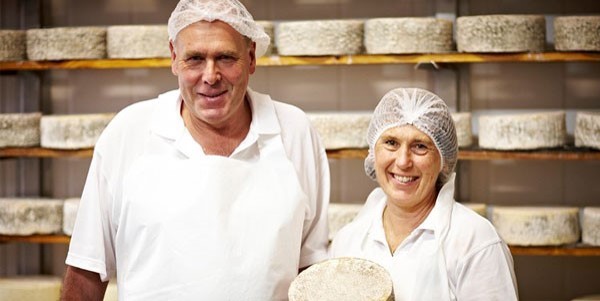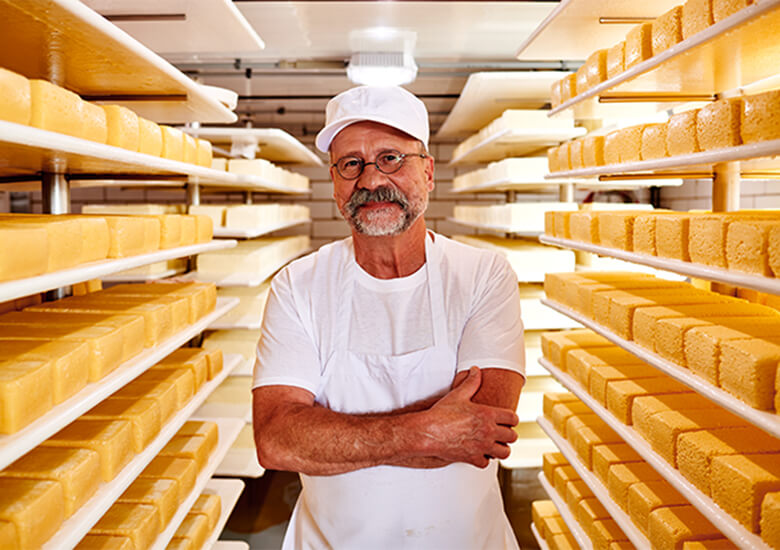A Taste of Credibility: Floridia Cheese Melbourne and Its Workmanship
Opening the Keys of Artisanal Cheese Making: A Detailed DIY Guide
In the realm of cooking craftsmanship, artisanal cheese making stands as a testament to the fragile balance between tradition and advancement. As we begin on this trip to debunk the art of producing elegant cheeses, we are encountered with a tapestry of abilities and keys waiting to be untangled.
Picking the Right Milk
When embarking on the trip of artisanal cheese making, the selection of milk plays an important function in establishing the top quality and attributes of the last product. The kind of milk selected affects the flavor, appearance, and overall account of celebrity. Raw milk, right from the pet, is favored by many artisanal cheesemakers as a result of its distinct blend of enzymes, microorganisms, and taste substances. Utilizing raw milk comes with dangers and guidelines, making pasteurized milk a safer choice for newbies.
Furthermore, the resource of the milk, whether from cows, goats, lamb, or buffalo, contributes unique flavors and characteristics to the cheese. Each kind of milk brings its own subtleties, allowing for a vast variety of cheese selections to be crafted based on the selected milk.
Culturing and Coagulating
To initiate the cheese-making procedure, the crucial steps of culturing and coagulating need to be meticulously executed to transform milk into curds and whey. Culturing involves introducing helpful microorganisms to the milk, which after that starts the fermentation procedure. These microorganisms transform lactose (milk sugar) right into lactic acid, creating the acidic atmosphere needed for coagulation. The sort of society used can considerably affect the taste, appearance, and ripening of the final cheese product.

The timing and temperature control during culturing and coagulation are critical variables that affect the last result of the cheese. Correct implementation of these steps is necessary to ensure the wanted structure, flavor, and uniformity of the artisanal cheese being produced.
Draining Pipes and Pressing Curds
After the milk healthy proteins have actually coagulated and the curds have actually been cut to release whey, the following vital step in artisanal cheese making entails draining and pressing the curds to attain the desired structure and uniformity of the final cheese product. The time for draining pipes can differ depending on the type of cheese being made and the preferred moisture content.
Once the curds have actually completely drained, the following step is pressing. Pushing helps eliminate any continuing to be whey and compacts the curds to form a solid cheese wheel. Pushing can be done you could check here using specialized cheese presses that use mild and regular pressure over an amount of time. The period and stress used during pressing will influence the final structure of celebrity, from creamy and soft to difficult and firm. Appropriate pressing and draining are crucial steps that dramatically impact the high quality and features of the artisanal cheese being produced.
Aging and Flavoring Techniques
Executing meticulous aging and flavoring strategies is pivotal in boosting the deepness and intricacy of artisanal cheeses, boosting their taste profiles to splendid levels of refinement and refinement. Aging plays a critical function in establishing the unique flavors and appearances that distinguish artisanal cheeses.
Flavoring methods also add dramatically to the last taste of artisanal cheeses. Cheesemakers may choose to introduce added flavors by incorporating active ingredients such as natural herbs, seasonings, and even fruits into celebrity throughout the production process. Furthermore, some cheeses are washed or massaged with different fluids, such as salt water or alcohol, to enhance their tastes and appearances.
Wrapping and Keeping Cheeses

Conclusion
In final thought, mastering the art of artisanal cheese making includes carefully selecting the ideal milk, complying with specific culturing and coagulating procedures, draining pipes and pressing curds effectively, and using numerous aging and flavor strategies. Bear in mind to cover and store your cheeses properly to guarantee optimum flavor and structure growth.
Each kind of milk brings its very own nuances, allowing for a broad variety of cheese ranges to be crafted based on the selected milk.After the milk healthy proteins have actually coagulated and the curds have actually been reduced to launch whey, the following essential step in artisanal cheese making includes draining and pressing the curds to accomplish the wanted appearance and uniformity of the last cheese item. The majority of cheeses should be covered in wax paper or cheese paper to allow them to breathe while safeguarding them from drying out. For cheeses that need to continue aging, such as bloomy rinds or washed skins, guarantee they are saved in an amazing setting like a cheese cave or a refrigerator set to the proper temperature. By paying interest discover here to the covering and storage of artisanal cheeses, cheese makers and fanatics can protect the honesty of these specials and fully enjoy their complex flavors.